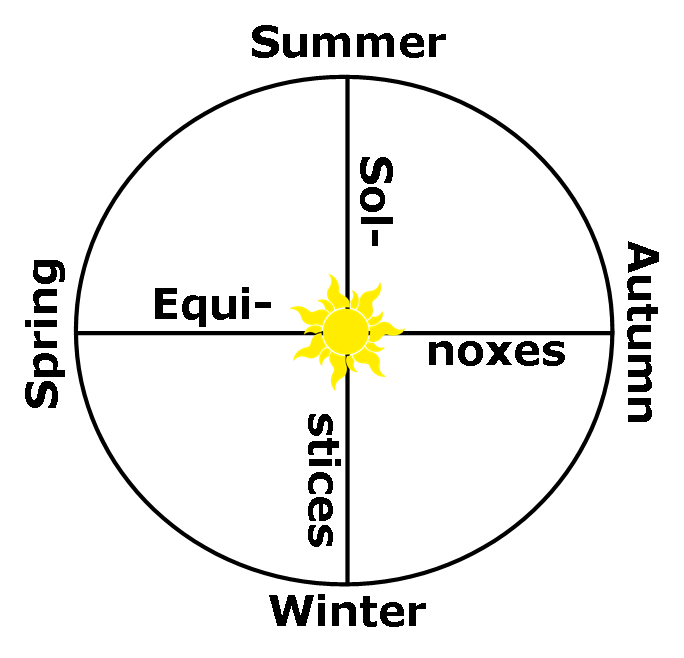


 |
 |
 |
Hopefully you no longer believe in the Roman deception which pretends that the Biblical stories about Jesus would have been historical accounts. After all, the facts tell us an entirely different truth about Jesus.
The undeniable truth is that Jesus is the personification of the central sun of our solar system. Perceived from the northern hemisphere, and particularly from between the latitudes of the Tropic of Cancer and the Arctic Circle, the celestial arc-shape path of our Light Bringer becomes in the fall each day a little smaller. But on (about) December 21, this daily shrinkage comes to stand still. In other words, the daily changing in the size of the Risen Savior’s arc has then stopped, or “died”. However, after three natural days, in which the nights lasted the longest of the year, this heavenly motion comes back to life again, starting with the sunrise on December 25. We celebrate this annual rebirth of Jesus with the Light Feast as a continuation of the Germanic Midwinter Festival.
As the Roman deceivers want this to be hidden from the uninitiated, they moved Jesus’ day of death from December 21st to “Good Friday”, that is, the Friday before Easter, which is today. Furthermore, they changed the meaning of this Passover to the resurrection of the Savior, which in reality occurs every year on December 25th.
Just like Christmas, also the Passover is originally a Germanic feast. As we celebrate during the Midwinter Feast our survival of the year’s darkest part, we celebrate during the Eostre Festival the fact that within a natural day the day time period has again become longer than the night time period. In other words, the light of the day has again overtaken or passed by the darkness of the night. The official version of the origin of the name “Passover” tries to fool us by pointing to the Hebrew word “Pesach”, but that is like putting the world upside down. In reality, the name “Passover” originates from the old Germanic verb for ‘passing by’. Somehow ‘passing by’ and ‘taking over’ merged into “Passover”. Another myth is that the name “Easter” is referring to the East. This is nonsense, as it is derived from the Old English “Eostre”. Actually, it is all quite straightforward, only by examining these names.
This (long) weekend, we celebrate the fact that the daily lighter period has taken over or passed by the nightly darker period. In other words, the entire period of natural day is again ruled by Light, and no longer by Darkness. We can also examine the way we still use the verb ‘pass’ in our contemporary language. For instance, we pass a deed. After this deed is passed, the previous owner passed it on to the following one. Similarly, we also pass a ball from the previous player to the next in various ball sports.
|
When we imagine a full year as a circle, then the straight lines that connect the starting points of opposing seasons form a cross within that circle. This is the true Cross of Jesus, as shown in the figure on the right-hand side. Opposite to the beginning of winter on (about) December 21st lies on this circle the beginning of summer on (about) June 21st. These two points are called ‘solstices’ from solstitium in Latin, literally meaning ‘solar standstill’. However, it is not the standing still of the Light Bringer, but the standstill of the daily growing (or shrinking) of its arc-like path. Likewise, opposite to the beginning of spring on (about) March 21st lies on this circle the beginning of autumn on (about) September 23rd. These two points are called equinoxes from aequinoctium in Latin, literally meaning ‘night getting even’ (with day). On these two days a year, the nocturnal darker period and the diurnal lighter period indeed get even. Now we know this, we can precisely explain why we are celebrating the Passing By Feast on the day after tomorrow, as according to our (ancient) tradition this feast day is always celebrated on the first Sunday after the first full moon following the spring equinox. This year (2017), the date of the spring equinox was Monday, March 20th. The first full moon after it occured last Tuesday, on April 11. Next, the day after tomorrow is indeed the first Sunday after the first full spring moon. |
 |
Are you also thrilled by the sound logic of Wholly Science? It explains all other “Christian” holidays equally straightforward! Furthermore, in case you want to learn more about the original Germanic holidays, then study the Germanic Moon Calendar.
This article was written on Friday, April 14th, 2017 by Johan Oldenkamp.
This artikel is also available in Spanish, German, and Dutch.
© Pateo.NL : This page was last updated on 2017/04/17.